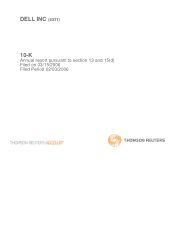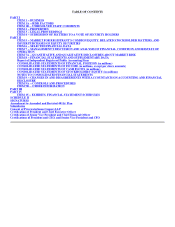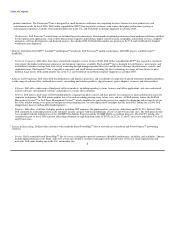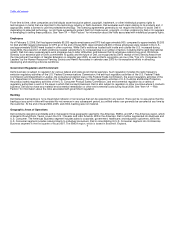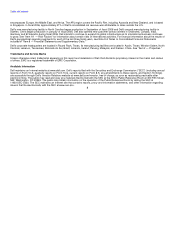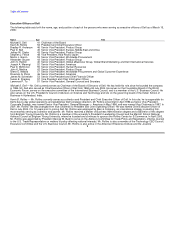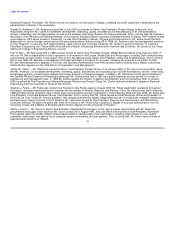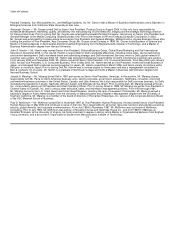Dell 2005 Annual Report Download - page 4
Download and view the complete annual report
Please find page 4 of the 2005 Dell annual report below. You can navigate through the pages in the report by either clicking on the pages listed below, or by using the keyword search tool below to find specific information within the annual report.
Table of Contents
This report contains forward-looking statements that are based on Dell's current expectations. Actual results in future periods may differ materially from
those expressed or implied by those forward-looking statements because of a number of risks and uncertainties. For a discussion of risk factors affecting
Dell's business and prospects, see "Item 1A — Risk Factors."
All percentage amounts and ratios were calculated using the underlying data in thousands. Unless otherwise noted, all references to industry share and
total industry growth data are for personal computers (including desktops, notebooks and x86 servers), and are based upon information provided by IDC
Worldwide PC, Printer, and MFP Trackers, March 2006. Share data is for the full calendar year and all Dell growth rates are on a fiscal year-over-year
basis. Unless otherwise noted, all references to time periods refer to Dell fiscal periods.
PART I
ITEM 1 — BUSINESS
General
Dell Inc., with fiscal 2006 net revenue of $55.9 billion, is a premier provider of products and services worldwide that enable customers to build their
information technology and Internet infrastructures. Dell offers a broad range of product categories, including desktop computer systems, mobility products,
software and peripherals, servers and networking products, enhanced services, and storage products. During calendar 2005, Dell was the number one supplier
of personal computer systems worldwide as well as in the United States. Dell's global market leadership is the result of a persistent focus on delivering the
best possible customer experience by selling products and services directly to customers.
Dell, a Delaware corporation, was founded in 1984 by Michael Dell on a simple concept: by selling computer systems directly to customers, Dell could best
understand their needs and efficiently provide the most effective computing solutions to meet those needs. Dell is based in Round Rock, Texas, and conducts
operations worldwide through its subsidiaries. Unless otherwise specified, references to Dell include its consolidated subsidiaries. Dell operates principally in
one industry and is managed in three geographic segments: the Americas; Europe, Middle East and Africa ("EMEA"); and Asia Pacific-Japan ("APJ"). See
"Item 1 — Business — Geographic Areas of Operations."
Business Strategy
Dell's business strategy combines its direct customer model with a highly efficient manufacturing and supply chain management organization and an emphasis
on standards-based technologies. This strategy enables Dell to provide customers with superior value; high-quality, relevant technology; customized systems;
superior service and support; and products and services that are easy to buy and use. The key tenets of Dell's business strategy are:
• A direct relationship is the most efficient path to the customer. A direct customer relationship, also referred to as Dell's "direct business model," eliminates
wholesale and retail dealers that add unnecessary time and cost or diminish Dell's understanding of customer expectations. As a result, Dell is able to offer
customers superior value by avoiding expenditures associated with the retail channel such as higher inventory carrying costs, obsolescence associated with
technology products, and retail mark-ups. In addition, direct customer relationships provide a constant flow of information about customers' plans and
requirements and enable Dell to continually refine its product offerings. At www.dell.com, customers may review, configure, and price systems within Dell's
entire product line; order systems online; and track orders from manufacturing through shipping.
1

